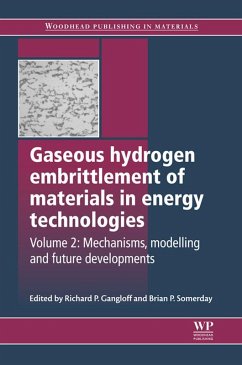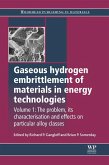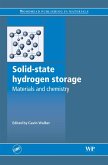Volume 2 is divided into three parts, part one looks at the mechanisms of hydrogen interactions with metals including chapters on the adsorption and trap-sensitive diffusion of hydrogen and its impact on deformation and fracture processes. Part two investigates modern methods of modelling hydrogen damage so as to predict material-cracking properties. The book ends with suggested future directions in science and engineering to manage the hydrogen embrittlement of high-performance metals in energy systems.
With its distinguished editors and international team of expert contributors, Volume 2 of Gaseous hydrogen embrittlement of materials in energy technologies is an invaluable reference tool for engineers, designers, materials scientists, and solid mechanicians working with safety-critical components fabricated from high performance materials required to operate in severe environments based on hydrogen. Impacted technologies include aerospace, petrochemical refining, gas transmission, power generation and transportation.
- Summarises the wealth of recent research on understanding and dealing with the safety, durability, performance and economic operation of using gaseous hydrogen at high pressure
- Chapters review mechanisms of hydrogen embrittlement including absorption, diffusion and trapping of hydrogen in metals
- Analyses ways of modelling hydrogen-induced damage and assessing service life
Dieser Download kann aus rechtlichen Gründen nur mit Rechnungsadresse in A, B, BG, CY, CZ, D, DK, EW, E, FIN, F, GR, HR, H, IRL, I, LT, L, LR, M, NL, PL, P, R, S, SLO, SK ausgeliefert werden.









